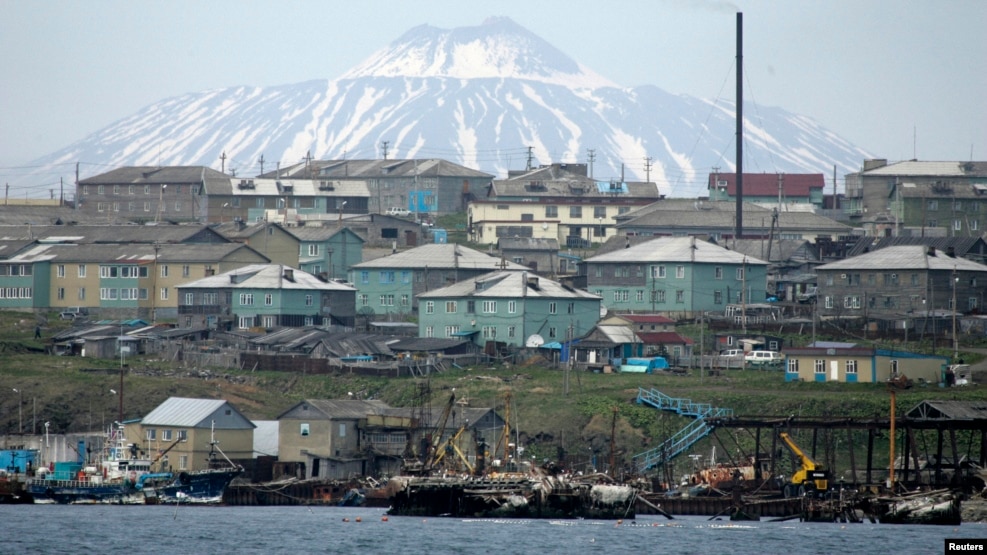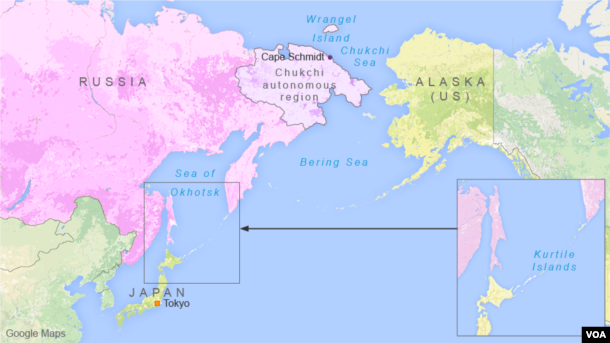Minimum wage protests planned in 340 cities
TheHill: Organizers behind a movement to increase the minimum wage to $15 an hour are promising its “largest, most disruptive protest ever” in response to Donald Trump’s stunning victory in the 2016 presidential election.
On the fourth anniversary of the movement to raise wages, tens of thousands of low-wage workers will protest next Tuesday in 340 cities around the country, as they demand higher pay. Strikes are planned by bagged handlers at Chicago O’Hare International Airport (ORD) and workers at McDonald’s restaurants around the country.
The “Fight for $15” protests will also hit Los Angeles International Airport (LAX), Newark International Airport (EWR), and about 20 other airports in major cities, organizers said on a call with reporters Monday.
“Just because the election went a certain way, doesn’t mean we’re going away,” said Kendall Fells, organizing director of the Fight for $15.
“It’s the exact opposite.”
On the campaign trail, Bernie Sanders called for raising the minimum wage to $15 an hour, while Hillary Clinton also voiced support for an increase in pay for low-wage workers. But Trump’s message on minimum wage was inconsistent, at times indicating he would support an increase in the minimum wage and at other times suggesting workers make too much money.
The current federal minimum wage is $7.25 an hour.
Raising the minimum wage is a “winning issue,” Fells said.
“On Election Day, even as Donald Trump won, ballot initiatives to raise the minimum wage passed in all five states,” he said.
Fells said there would be “thousands of folks” protesting at each airport.
The Fight for $15 movement is expecting “tens of thousands” of protesters from all walks of life, including baggage handlers, airline cabin cleaners, airport wheelchair attendants, janitors, cooks, home care workers, child care providers, teachers and graduate assistants.
Meanwhile, there is Obama’s mighty pen.
Obama Urged to Free Asylum-Seekers Before Trump Takes Office
About 4,000 women and children are in jail-like facilities
President-elect has promised to deport millions from U.S.
Bloomberg: Immigration advocates are asking the Obama administration to release thousands of detained Central American women and children who want asylum in the U.S., citing concerns that Donald Trump will deport them after his inauguration in January.
Representatives of groups including the Women’s Refugee Commission and the American Immigration Lawyers Association met with White House officials last week to discuss a host of immigration issues, including the fate of about 4,000 Central American detainees, some as young as two years old, who have fled violence in their home countries. They’re housed in jail-like facilities in Texas and Pennsylvania, some for more than a year, as they wait for the government to process their asylum pleas.
Immigration advocates want the president to either end the practice of detaining families altogether, as they’ve been requesting for years, or direct Immigration and Customs Enforcement officials to release families with a notice to appear before a judge on their own recognizance.
The plight of the Central American refugees, who fled violence and gangs in their home countries, is one of several 11th-hour immigration conundrums Obama faces as he prepares for Trump to enter the White House. The Republican campaigned on promises to crack down on undocumented immigrants and to build a wall on the Mexican border, and immigration advocates fear a government that has struggled under Obama to humanely handle a crush of asylum-seekers at the southern border will turn markedly more hostile under his successor.
“The family detention infrastructure is something that President Obama built, and unless he tears it down in the next two months this will be part of his presidential legacy,” said Carl Takei, staff attorney at the the American Civil Liberties Union’s National Prison Project.
DACA Applicants
Separately, advocates for about 750,000 young undocumented immigrants granted protection from deportation under Obama’s Deferred Action for Childhood Arrivals, or DACA, have pressed the White House to ensure Trump can’t use data compiled by the program to instead target and remove the people from the country. House Democrats called on Obama last week to issue a presidential pardon for the immigrants, who were brought into the country as children and have grown up as “Americans,” Obama said in Nov. 14 news conference.
The White House said last week that the president’s clemency power can’t be used to confer legal status on undocumented residents. Pete Boogaard, a White House spokesman, declined to comment on whether the administration has the authority to release the asylum seekers.
Trump is poised to inherit one of the worst humanitarian crises in a generation along the U.S.-Mexico border. Starting in 2014 scores of women and children fleeing gang violence in Central America began presenting themselves to unprepared border officials along the southern U.S. border. Generally under U.S. law, asylum seekers who can show a “credible fear” of returning to their home countries are entitled to a removal hearing before a judge.
Facing a lack of beds, the Obama administration raced to open additional family detention centers to house large numbers of children, who are required by law to be held in the least restrictive conditions possible.
Specter of Sessions
Trump has promised to crack down on undocumented border crossers while also restricting refugees from terror-prone countries, but he has yet to articulate a policy for the thousands of asylum seekers who enter the U.S. each year. Trump’s top immigration advisers, including Kansas Secretary of State Kris Kobach and Alabama Senator Jeff Sessions, a Republican who Trump plans to nominate as attorney general, have argued that Obama has been too easy on migrants.
“Instead of removing illegal immigrants, the President has expended enormous time, energy, and resources into settling newly arrived illegal immigrants throughout the United States,” Sessions wrote in a January 2015 “immigration handbook” for Republicans.
The crisis shows no sign of abating. In fiscal 2016 the U.S. apprehended a record 78,000 family members, mainly from Central America, on the southwest border, according to government figures. A record 41,000 immigrants are currently detained in U.S. facilities and half are asylum-seekers, said Bob Libal, executive director of Grassroots Leadership, an advocacy group that seeks an end to family detention.
The three family-detention facilities have a combined capacity of about 3,600 beds. The Department of Homeland Security is currently evaluating bids to add another 2,500 beds. Southwest Key Programs, an Austin-based nonprofit that operates shelters for unaccompanied migrant children, has looked at turning an abandoned Wal-Mart store along the border into a “humane shelter” for families seeking asylum, according to Cindy Casares, a spokeswoman for the group.
Advocates have long called on Obama to scrap the facilities because of inhumane conditions, including reports of babies being dressed in prison jumpsuits and punishment meted out to children for playing too noisily. The advocates believe the Central American asylum seekers pose a low flight risk and they recommend alternatives to detention, including wearing ankle monitors to ensure they show up for their court dates.
‘Added Urgency’
Under Trump, the advocates fear, the government could broaden the use of expedited removal -– fast-track deportation proceedings that take place without a judge — a practice that is already being used more frequently with asylum seekers.
“There is an added urgency to make sure that the families that are here get an opportunity to be heard in front of a judge,” said Ben Johnson, executive director at the American Immigration Lawyers Association. “There is some concern that those families under the new administration will never have that chance.”
Panic is meanwhile rising along the border as migrants have digested the news of Trump’s election. Immigrants staying in cramped shelters or church basements are trying to leave the border region for cities farther north such as Baltimore or New York, from where they believe it is harder to be deported, said Michael Seifert, an activist with the Southern Border Communities Coalition.
“There’s literally not enough commercial bus space to get the people out,” he said. “They’re all terrified.”
How does this all get packed up and by whom? Soros….
Soros-Funded Group Pushing ‘Sanctuary Campus’ Anti-Trump Protests
The demonstrations are billed as being led by students
FreeBeacon: An organization that has received funding from liberal billionaire George Soros is pushing anti-Donald Trump student protests that call for sanctuary campuses to protect undocumented students.
Thousands of students at more than 80 college campuses have participated in “sanctuary campus” protests, CBS News reported. Students have signed petitions and walked out of classes at their universities “in support of undocumented classmates.”
The protests are billed as though they are being organized by students at the grassroots level, but in fact a D.C.-based immigration activist group is behind them.
United We Dream is the “largest immigrant youth-led organization in the nation,” composed of over 100,000 immigrant youth and 55 affiliate organizations in 26 states, according to its
website. The group seeks to “organize and advocate for the dignity and fair treatment of immigrant youth and families, regardless of immigration status.”
The group issued a “state of resilience and urgency for immigrants” on Nov. 9, the day after Trump’s victory over Hillary Clinton.
“The most contentious election in a generation is over. Across the country, immigrant youth in orange shirts, and backed by the strength of their convictions, faced the racism of Trump head on in a fight for their lives,” the press release stated.
“Immigrants are declaring a state of urgency and resilience. Over the coming weeks, our families and community members will need to tap into the incredible strength that brought us to this country and which we use to survive,” said Cristina Jimenez, the executive director and co-founder of United We Dream.
“This is a time to mobilize in every city state across our country,” Jimenez later added in the release. “We calling on all people to take action to demand that their mayors and governors declare their cities and states as spaces of safety.”
United We Dream has received tens of thousands of dollars from George Soros’ Open Society Foundations. Unbound Philanthropy, a private grant-making foundation focusing on migrants and refugees, and a handful of other liberal grant-making organizations have also funded the United We Dream Network since 2009.
Taryn Higashi, the executive director of Unbound Philanthropy, sits on an advisory board of Soros’s Open Society Foundations.
United We Dream has teamed up with Voto Latino, a non-profit organization that “empowers” American latinos, on the campus protests. Actress Rosario Dawson is cofounder and chairwoman of Voto Latino.
“Donald Trump began his campaign disparaging immigrants, calling for mass deportations, and now has confirmed his plans to immediately deport 2-3 million people,” said Maria Teresa Kumar, president and CEO of Voto Latino. “We call on all young people to organize with us in our college campuses and on social media in our community’s fight for justice and dignity, to keep our community informed and to provide immigrant youth and their families protection from deportation and separation.”
Voto Latino tweeted about sanctuary campuses on Nov. 16.
“We look forward to our campus chapters organizing & pushing their schools to become sanctuary campuses! #HereToStay,” the tweet said. The tweet linked to an article about universities facing pressure to become immigrant sanctuaries.
The groups have launched a MoveOn petition calling for sanctuary cities that will be delivered to mayors across the United States. It has garnered more than 100,000 signatures. United We Dream also followed Trump around the campaign trail.
United We Dream did not return a request for comment on its involvement in the campus protests.


